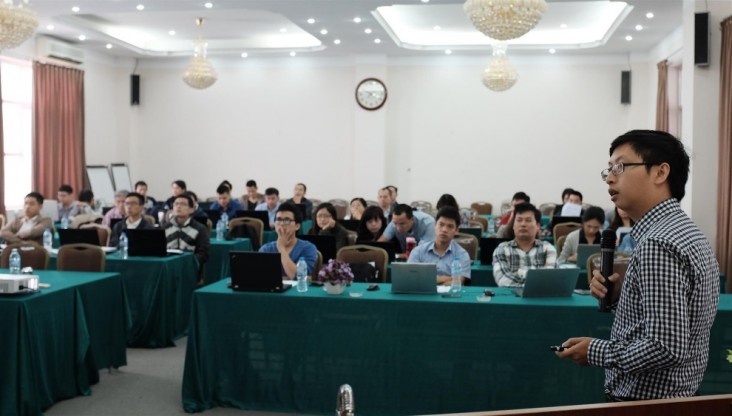Speeches Shim

September 2016—Energy efficiency in the building sector is becoming a key area of interest in Vietnam, where energy consumption is growing quickly as a result of increasing industrialization and urbanization. In 2012, the building sector accounted for 38 percent of the country’s power consumption, and energy demand is expected to increase as the urban population continues to grow.
While Vietnam has an Energy Efficiency Building Code to reduce energy use, implementation has been challenging, partly due to the lack of local expertise to design energy efficient buildings. Apart from occasional trainings on building physics, design and tools offered by professional organizations and academic institutes for engineers and architects, Vietnam does not have any institutionalized continuous learning opportunities with a focus on energy efficiency in buildings. Even universities have only recently started to offer energy efficiency-related programs.
While Cu Nguyen Khanh has worked as a heating, ventilation and air-conditioning (HVAC) engineer in Vietnam for several years, his knowledge of energy efficiency was limited.
When Khanh heard about the USAID Vietnam Clean Energy Program in June 2014 and how it works to improve energy efficiency within the construction sector, he asked about training opportunities to enhance his skills in designing and operating energy efficient HVAC systems in new and retrofitted buildings.
The program’s international trainers assessed Khanh’s technical capabilities and were impressed with his knowledge and eagerness to learn new techniques and technologies. And the hands-on approach of the trainings gave Khanh the confidence to create designs and then perform actual installations.
“I have been able to apply what I have learned from the trainings. In my own way, I really would like to contribute to sector development by promoting energy efficiency principles and methods,” Khanh said.
Together with the program team, Khanh is currently working on designs for an energy efficient hotel in Hanoi and an office building in Ho Chi Minh City. Both buildings are expected to be added to the short list of energy efficient buildings in Vietnam, and will demonstrate the many benefits of such buildings in urban spaces.
Khanh is one of more than 1,000 engineers and architects from 40 cities and provinces all over Vietnam who have been trained by the program on energy efficient building design. He is now helping the program train others and has customized training materials for Vietnam’s building sector. The program aims to establish a pool of local trainers like Khanh to ensure that Vietnam has able professionals to draw upon for the long term.
USAID’s Vietnam Clean Energy Program, which runs from 2014 to 2017, supports the Ministry of Construction’s Green Growth Action Plan to increase energy efficiency in the building sector and assists the government to implement and monitor the Vietnam Energy Efficiency Building Code. The program has trained almost 3,000 government officials, practitioners and university lecturers on energy efficient, high performance building design; green building design and certification; commissioning of buildings to ensure that planned savings actually happen; and energy simulation software. The project has also helped improve the operation of over 21 local organizations and institutions.
LINKS
Follow @USAIDVietnam, on Facebook, on Flickr, on YouTube

Comment
Make a general inquiry or suggest an improvement.